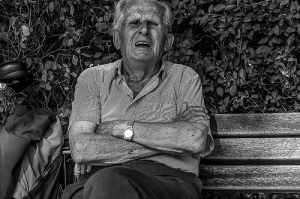Does race play a role in evaluating a loved one’s risk of nursing home abuse? According to a recent article from New America Media, Latino/a seniors may be at greater risk of elder abuse once they enter a nursing home or assisted-living facility due to cultural differences and discrimination.
The Pew Research Hispanic Center Project emphasizes that Latinos are “the nation’s largest minority group and among its fastest growing populations.” To be sure, the Latino population made up 17 percent of the U.S. population in 2012, and it “accounted for more than half of the nation’s population growth” between 2000 and 2010. Given that California has a particularly high Latino/a population (with Los Angeles featuring the largest Hispanic population in any U.S. metropolitan area), it’s important to consider the ways in which nursing home abuse and neglect might distinctly affect these older adults.
Physical Abuse and Discrimination
In many cases, Latinos in nursing homes suffer physical abuse due to discrimination. In the case of Esther González, a Guatemalan immigrant at a nursing home in Culver City, the caregiving aide repeatedly hit and struck the patient. The abuse began when the aide pushed González, but quickly escalated. González recalls the caregiver “using a hook from a plastic bag” to strike her legs.
In addition to the physical abuse, González also suffered from psychological and verbal abuse. The latter suggests that the caregiver may have discriminated against González. The patient recalled the caregiver using offensive language toward her on multiple occasions. While a number of Latinos in nursing homes, like González, don’t have perfect English-language skills, it’s important to consider the role that racial discrimination might play in these incidents.
Cross-Cultural Approaches to Combating Elder Abuse
In response to stories like González’s, many elder abuse advocates across the country have begun to consider new ways to address nursing home abuse and neglect. In particular, advocates may want to consider cross-cultural approaches that take into account the growing number of Latino elders in these facilities and methods to address language barriers.
The Administration on Aging (AOA) predicts that, between 2008-2030, the elderly Latino population (those aged 65 years and older) will increase by 224 percent. In contrast, the AOA predicts that the elderly non-Hispanic white population will increase by only 65 percent during that same period.
In addition to facing issues of discrimination, one of the primary problems for addressing elder abuse against Latinos is simply knowing about that abuse. According to the National Hispanic Council on Aging and Casa de Esperanza, members of the elderly Latino community in California and elsewhere face many barriers to seeking help for abuse. For example, some of these barriers include:
- Fears of the police, fears of the judicial system, and fears of deportation;
- Lack of knowledge about the U.S. legal system or misinformation about the U.S. legal system;
- Language barriers;
- Anti-immigrant sentiments and racial discrimination; and
- Economic challenges.
Advocates also emphasize that elderly victims in the Latino community can have cultural values that discourage them from reporting abuse, even if they don’t face some of these other barriers.
If you have an elderly loved one who may have suffered an injury because of nursing home abuse or neglect, you should always contact an experienced San Diego nursing home abuse lawyer. Elder abuse can happen to anyone at any time. Contact the Walton Law Firm to learn more about our approach to elder abuse cases.
Photo Credit: mtop.hh via Compfight cc
See Related Blog Posts:
Hospice Mistreatment and Federal Sanctions
Rising Number of Falls and Dangerous Injuries Among the Elderly
 Southern California Nursing Home Abuse Lawyer Blog
Southern California Nursing Home Abuse Lawyer Blog









